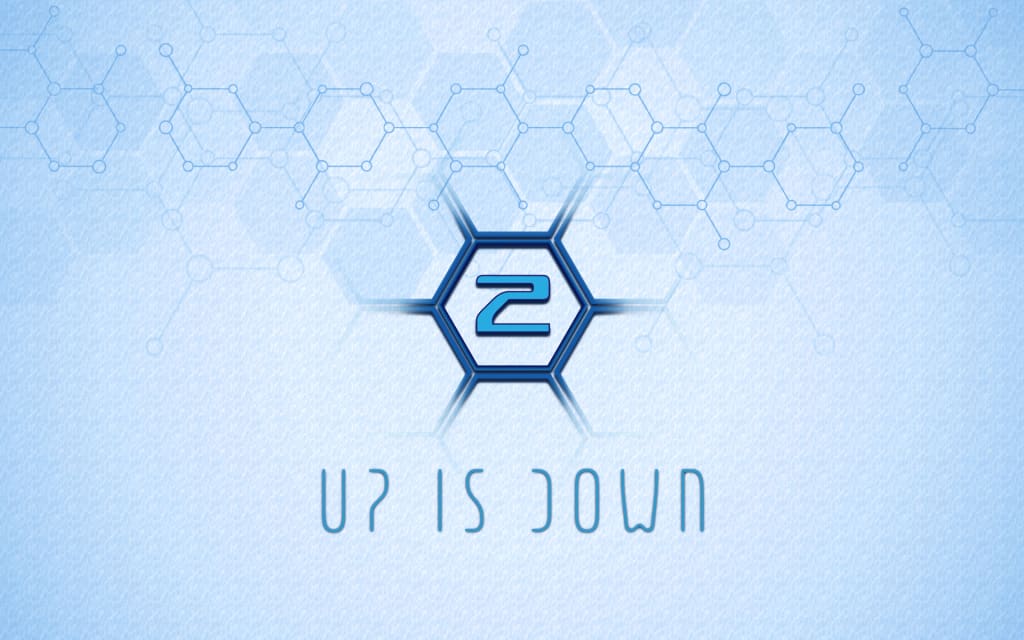Up is Down, Down is Left
Society 2.0 - Chapter 2

Up is Down - Challenging Our Assumptions
There is no good reason why our maps don't look like this:

There's also no reason that we don't select the image below, the way I have oriented it, when we want to display an image of the Earth:

Let's not get caught up in arguing about maps, because this isn't an article about map making. Yes there are a lot of explanations on why we look at the world the way we do, and there are a lot of events that led up to the decision to orient our maps the way we do.
The important takeaway I'm trying to get across is that these were all arbitrary decisions. There is no underpinning logic to dictate why our maps must be oriented the way they are. Someone at some time made an arbitrary decision. And that decision became popular and carried itself forward through tradition.
And now we find ourselves in a world where North is considered up, and South is considered down. And these arbitrary considerations further dictate how we envision the orientation of the galaxy and even the universe.
This is not an article about how we should orient our maps. This is an article about assumptions, and how we can recognize and pull apart our assumptions.
If we want to build a better society, we have to learn how to spot and challenge our assumptions; even deeply held ones that have been around forever.
Here is another example, the direction we write:

The English language is typically written from left to right, and we start at the top of the page and move down from there, line by line.
Arabic, Hebrew and many other languages are written right to left. Chinese, Japanese, and Korean are traditionally written vertically rather than horizontally.
Japanese Manga books can be a surprise to many English speakers because to someone who reads English, these books appear to start at the back of the book and work their way from the back to the front.
Again, these are all examples of arbitrary assumptions. The reason why I am starting with these examples, is because these assumptions are easy to see when you point them out. It's easy to see that it doesn't really matter which direction we write a book. It can be written in any direction. Picking a direction and sticking to it is useful because it speeds up understanding, but at the end of the day, there is no naturally superior direction to others.
At any time we could change these assumptions, and after a period of getting used to them, the new direction would be just as easy to read as the old direction.
Now let's get into assumptions that are a little more difficult to challenge.
How to Challenge Challenging Assumptions
A slightly more difficult assumption to challenge is English grammar. There are a lot of logical and useful conventions in English grammar, but there is also a lot of silly nonsense.
The inconsistencies in English are easy to make fun of (https://www.oxford-royale.com/articles/learning-english-hard), but have you ever asked yourself why we don't fix these things?
What's stopping us from fixing these problems and making English easier to learn and use? Nothing, except tradition, fear of change, and resistance to the effort it would take to implement these changes.
It's true that early English texts might become more difficult to read if we radically change the language, but we already have these issues with Old English, and Ancient Greek. These aren't really problems, though, because we have the technology to convert any current English writing into a new system.
If we recognize our language has problems, there is no logical reason not to fix them. Yet here we are, holding onto the ancient rules of our language solely because it has been that way for a long time.
As an opposite example: Esperanto is one of the more popular attempts to solve the issues we see in many languages. It is designed to be easy to learn and use. Maybe one day Esperanto, or a language like it, will rise to mainstream use. For now we seem to be content to make do.
And that is a key concept I will be talking about when I talk about Society 2.0. We make do with so many things, solely because we have always done it that way and can't imagine anything different.
In many ways the design of our society is failing us, and millions of people suffer as a result. But we don't even recognize that the problem is with the design of our society, because we can't imagine society being any different than it is. To us, our society seems like a natural inevitability. It appears to us that our society is the only way a society could be.
And that's why the vital first step is to learn how to recognize and challenge our assumptions.
I'm sure this sounds very naive, and you're probably ready to write all of this off as idealistic nonsense. But ask yourself:
- Why is this naive?
- Why would a different society not be possible?
- What inevitable factors of the world would stand in the way of society being any different than it currently is?
- Why are those factors inevitable?
- Really look at those factors. Are they really an inevitable natural phenomenon? Or do they only seem true because they have "always been that way"?
This is an extremely difficult exercise. And truthfully, you might not be up to the challenge of asking yourself these questions and answering them honestly.
But the first step towards a better society is asking these questions and recognizing that our society is built on assumptions; assumptions that can be changed.
Society, as it exists, is not inevitable. We have options.
Once we have embraced our ability to challenge assumptions, and can envision a society that is different than the one we have, then we can start talking about a better society, and defining what that might be.
But that is a topic for another chapter.
If you want to get really wild with challenging your assumptions, check out this article on our number system.






Comments
There are no comments for this story
Be the first to respond and start the conversation.